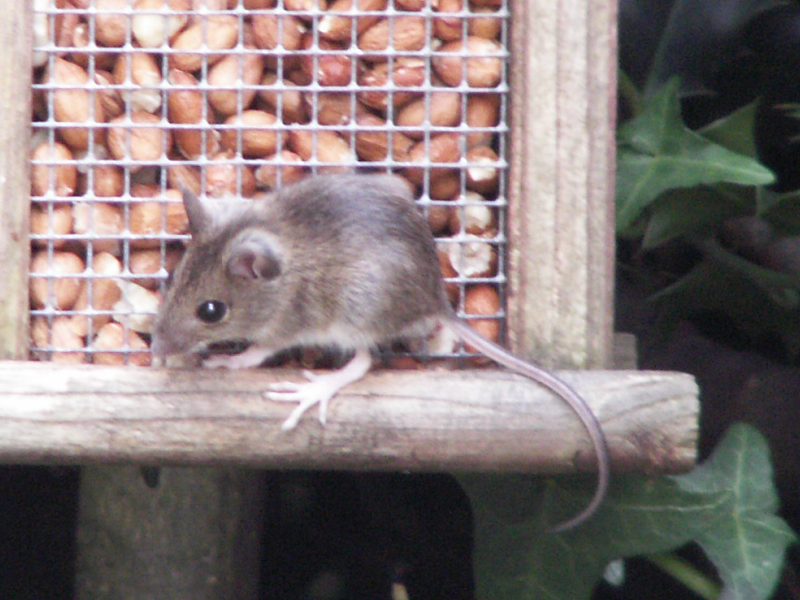Wood Mouse
For the past week or so this little mouse has been coming to feed on the peanuts in the bird feeder hanging on the hedge between the garden of the Lodge and the Cemetery. It climbs up through the hedge, where presumably it lives, to get to the bird feeder. It is fairly difficult for it to get to the peanuts but it is very persistent!
I think it’s a Wood Mouse or Long Tailed Field Mouse. They have a dark brown fur with big eyes and ears for their size. They grow to about 10cm long and weigh 30 grams or so full grown – this is a small one.
They can live just about anywhere there is food and shelter. Traditionally they roam fields, hedgerows, forests and grass lands where there is plenty of food. They are omnivorous and will eat a range of seeds, berries, invertebrates, worms, carrion and other similar food. They tend to have short lives in the wild as so many different creatures prey on them, they live an average of 6 to 12 months.
They can reproduce frequently and have a gestation period of around 25 days giving birth to between 4 and 7 pups which are able to fend for themselves after about 4 weeks. This short parenthood period means that wood mice can reproduce several times in a year.
They nest wherever there is cover and warmth, this usually means below ground but they can also be found in hedgerows and buildings.
Generally they are nocturnal animals with superb hearing and vision (hence the large eyes and ears), because of this they are a vital source of food for other larger nocturnal hunters such as owls.
Related Website: Wildlife Britain
Website URL: http://www.wildlifebritain.com/fieldmouse.php

